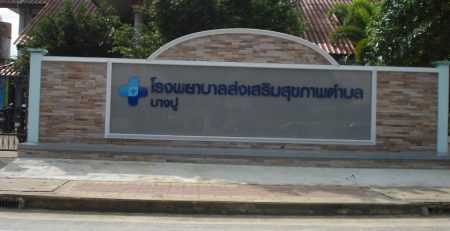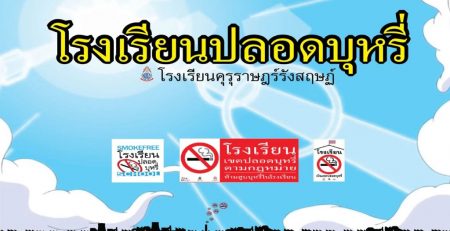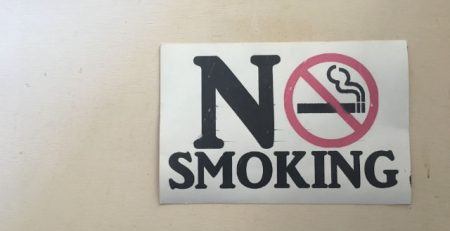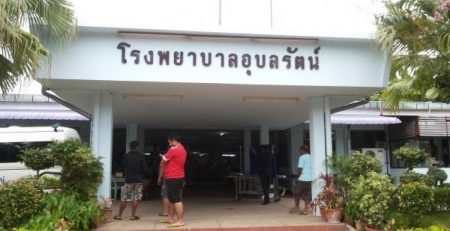Things that we cannot do or we have not yet done
This reporter had the opportunity to participate in a meeting of The direction for driving the Smoke free provinces on 19 December 2013 at Richmond Stylish Convention Hotel, Nonthaburi. There were 70 people taking part in the meeting. In the meeting, I had a chance to learn about tobacco control networks. Moreover, participants also gained knowledge on directions to drive smoke free provinces. The number of additional provinces that participated in the smoke free province program was 17 provinces, especially those provinces having a high rate of smoking prevalence. This meeting was set at the 2nd meeting of the smoke free province.
The atmosphere in the meeting was collaborative with a lot of people from various provinces joining the meeting in order to share experience about working on smoke free provinces and also to tell about cases of smoke free provinces. One of those cases happened at Lamphun province.
Khun Puangpaka Suriwan, (Email: puang8876@hotmail.com), who worked at the Amphun Provincial Health office, told her experience working for the smoke free community at Lumphun province as below:
Lumphun: Smoke – free homes, temples and schools
- Addressing smoking problems in communities in Lumphun province is set as a high priority. Targets for the work are set on risk areas of smoking in communities. This includes emphasizing developing non smoking community models, and finding measure to encourage people in communities to participate in non smoking campaigns via driving community networks to work on these measures.
- The purpose of this project is to reduce the smoking rate among both present smokers and initial smokers which focuses on self-quitting smoking.
- To promote behavior change in high risk groups who are smoking.
- How to have behavior changing toward a non smoking norm along with an existing tradition (Kin Meuang)
- Set regulations to fine smokers smoking in non – smoking areas (homes, temples and schools)
- Use local radio broadcast knowledge of smoking dangers, and community volunteers providing information to local people aiming to promote behavior changing consistent with their tradition (Kind Meuang) such as banning the offering of cigarettes in traditional ceremonies to monks.
- Have knowledge testing and evaluation of local people.
- Establish non smoking campaigns via religious leaders in order to let them provide smoking danger knowledge to senior people who participate in activities at temples.
- Build student models and provide them training camps in order to emphasize knowledge of smoking dangers and through which they can share this knowledge with their parents, such as by letting them regularly write letters to their father asking him to quit smoking.
- Build Models of those smokers who are able to quit smoking by themselves and expand efforts for more results in doing that.
- Establish a quit smoking clinic in health promotion hospitals in villages providing quitting smoking methods and giving free mouthwash liquid with these hospitals regularly working to monitor and help smokers to quit smoking.
Work directions emphasizing setting smoke – free homes, temples and schools
- Establish a main office using local materials (fund staff through various funds) in order to encourage and promote non – smoking in homes, temples and schools and to prevent smoking.
- Creating leaders (local leaders) just as doctors in local hospitals observed, Behaviors of leaders are imitated by villagers. However, in earlier times, most leaders were smokers. Recently, non smoking campaigns are driving communities, resulting in behavior changes by local people through encouragements through means such as providing rewards.
- Establish network working areas (foundations and staff); for example, activities in communities emphasizing cooperation of all networks (homes, temples and schools) for participation in activities.
- Concern for people who have risk behaviors to smoke; a survey was done on 16 risky areas in communities. Results showed that those who smoked most in families were the fathers (67%), followed by sons. Survey results also showed that leaders have an influence on the behavior of family members. Most smokers had been smoking 10 years or longer. One question asked to smokers: Have you thought about quitting smoking Most smokers answered that they thought of quitting smoking (58%). The most common problems cited by those smokers quitting smoking were that they were looking for advisors to help them quit and they did not know who to consult for quitting smoking.
- Provide a clear understanding of measures, purposes and targets in all areas and then cooperate with network parties in terms of what needs to be done and who is going to perform the work, setting work goals with the theme, people healthy and with good behavior.
- The results of work performance: 16 community models in 2013 which will expand to include more communities in 2014
- Supported 90 people as models (who received rewards) and also planned to expand results further.
- Established additional networks with schools, village leaders and communities.
- Set social measures.
- Established public parks in communities as non smoking zones.
Khun Puangpaka Suriwan said that there are things that we cannot do or we have not yet done, so what we can do is what we consult and cooperate on when planning our management of driving work performance of the smoke free province program. Moreover, we remain concerned about social lessons, work experiences, social trend changes, knowledge provided, and work cooperation about non smoking networks. These lessons will allow us to expand our efforts for more and better results in the future.
This lesson was reported by Ratikorn Pambrige.
Admin blog at TRC
ratikorn.pem@trc.or.th












